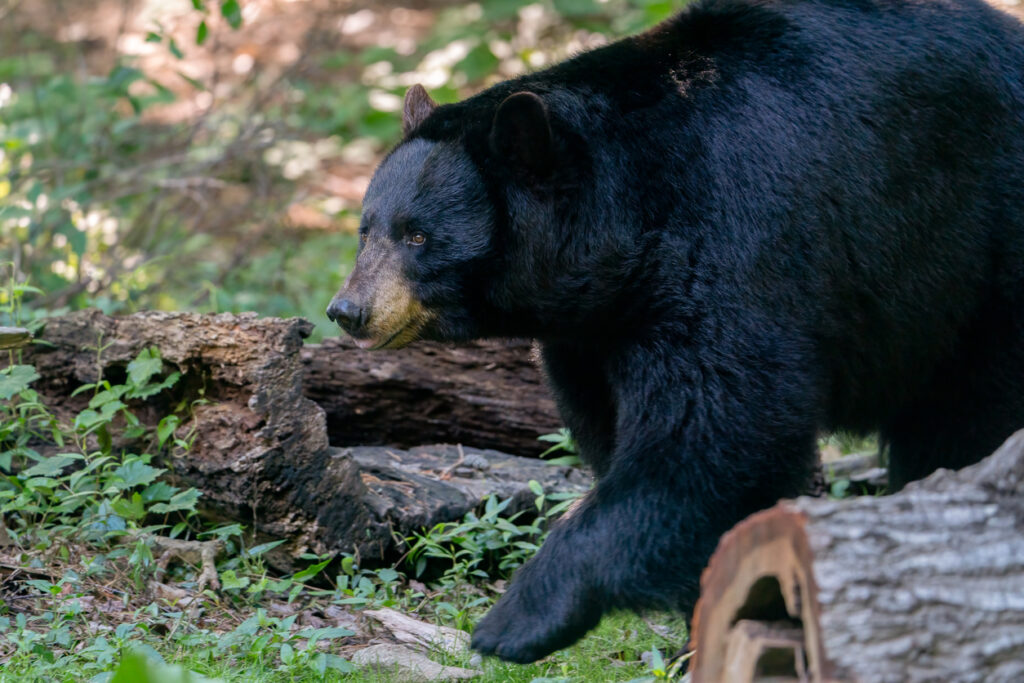When visiting or living in Western North Carolina, it is essential to have a thorough understanding of black bear safety. By gaining a comprehensive understanding of their behavior, habitat, and interactions with humans, we can strive for a harmonious coexistence while prioritizing the safety of both people and bears. Join us as we explore essential information about black bears in Western North Carolina.

- Identifying Black Bears: Black bears (Ursus americanus) are the only species of bears found in North Carolina. Their fur can range from black to cinnamon or even blonde. Adult black bears typically weigh between 150 and 600 pounds and stand about 2 to 3 feet tall at the shoulder. Recognizing their distinct features, such as a straight face profile, rounded ears, and small, curved claws, can help identify them in the wild.
- Habitat: Black bears thrive in various habitats, including forests, swamps, and mountainous regions. In Western North Carolina, they can be found in the expansive forests of the Appalachian Mountains, such as the Pisgah National Forest and Great Smoky Mountains National Park. These areas provide bears with ample food sources, cover, and suitable denning sites.
- Behavior and Diet: Black bears are primarily omnivorous, with their diet varying based on the seasons. They feed on a wide range of foods, including berries, nuts, grasses, insects, small mammals, and occasionally carrion. During late summer and fall, they focus on foraging to accumulate body fat for hibernation. Although generally shy and avoiding human interaction, bears may become more active in residential areas if food sources are easily accessible.
- Bear Safety and Encounters: Ensuring bear safety is of utmost importance for both humans and bears. Here are key guidelines to minimize potential conflicts in the outdoors:
- Store food properly in bear-resistant containers, in your car, or by hanging your food, particularly when camping or hiking.
- Maintain a safe distance from bears and never approach or feed them.
- If a bear is aware of your presence, speak calmly, back away slowly, and give the bear space to retreat.
- Be mindful of your surroundings, especially when hiking or camping in bear habitat.
- Respecting Bear Habitat: Respecting bear habitat is crucial for their conservation and our safety. Avoid camping or hiking near bear dens, berry patches, or other food sources. These areas are critical for bears, particularly during periods of food scarcity. By giving bears the space they need, we promote a healthy coexistence and reduce the chances of negative interactions.
- Reporting Bear Sightings and Nuisance Behaviors: Reporting bear sightings and nuisance behaviors to local wildlife agencies, such as the North Carolina Wildlife Resources Commission, is essential. This information helps researchers and wildlife officials track bear populations, understand movement patterns, and take necessary measures to minimize conflicts between bears and humans.
- Bear-Proofing Your Property: If you reside in or near bear country, take proactive steps to minimize attractants and avoid potential conflicts:
- Secure garbage in bear-resistant containers or keep it in a locked area until collection day.
- Remove bird feeders during spring and summer when natural food sources are abundant.
By prioritizing bear safety and respecting their habitat, we can ensure a harmonious coexistence with black bears in Western North Carolina. Remember to practice bear safety guidelines, report bear sightings and nuisance behaviors, and take necessary steps to bear-proof your property. Together, we can contribute to the conservation of these magnificent creatures while preserving the natural beauty and biodiversity of this remarkable region. Stay informed, be cautious, and respect the bears that call Western North Carolina their home.

Disclaimer: The information provided in this blog is for educational purposes only. While we strive to provide accurate and up-to-date information, bear behavior can vary, and individual encounters may differ. It is important to rely on local wildlife agencies and experts for specific guidelines and regulations regarding bear safety. Altamont Property Group and the author of this blog cannot be held responsible for any actions taken based on the information provided. Always exercise caution and prioritize safety when encountering wildlife.

